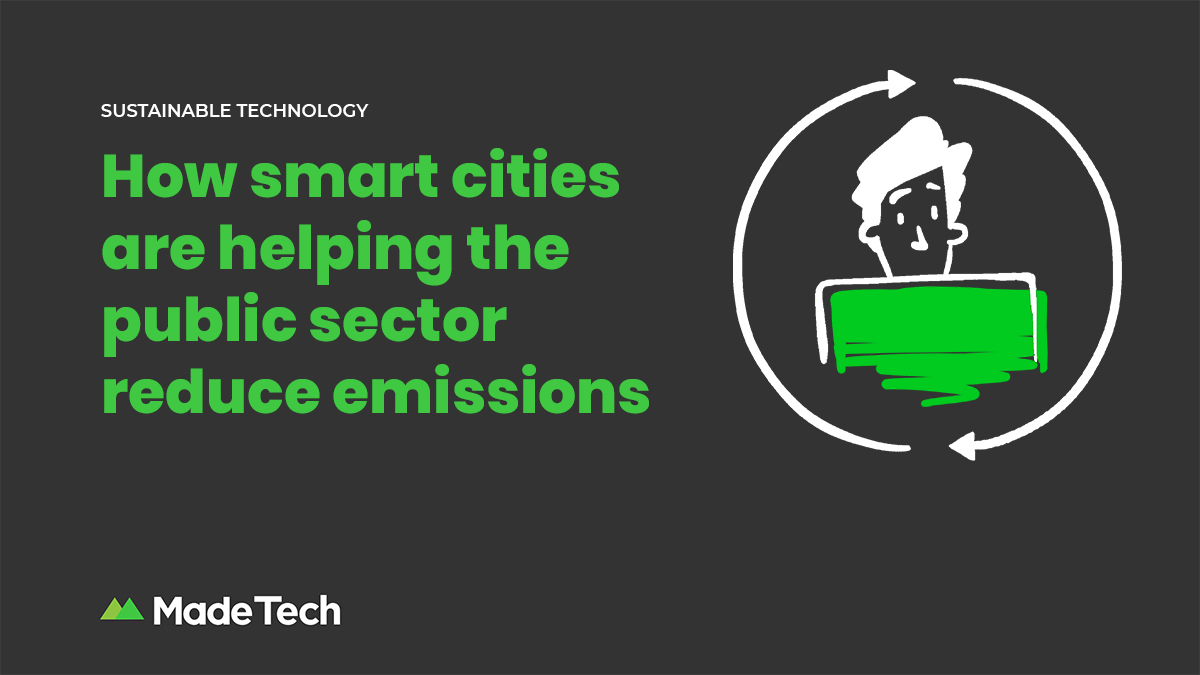
Our global population is exploding, and the latest estimates project it’s set to reach 10 billion by 2050. This growth of almost 2 billion people will put an even greater demand on our existing resources, including energy. Most of us are also eager to improve our quality of life, which is often done by finding new ways to incorporate technology into our daily lives. However, with growing concern around climate change, these uses for technology need to be more efficient and sustainable. So how do we start to reduce the carbon footprint of a city while improving lives?
The answer could be in how we build smarter cities for the future.
What are smart cities?
Smart cities are large settlements that are data-driven, using a variety of sensors, analytics and automated processes to streamline traditionally manual services. This means that society and the overall quality of life improves, as less time and effort gets spent on mundane and repetitive tasks.
Bristol is an example of a city that is innovating in this way in order to reach their target of reducing CO2 emissions by 40% through a number of initiatives such as smart metering.
European cities like Copenhagen are pushing the boundaries through research and development undertaken by a smart cities incubator called the Copenhagen Solutions Lab. The incubator’s current focus is on air quality and the population’s flow along the roads.
Further afield, cities including Dubai and Singapore are also installing infrastructure and putting revolutionary systems in place, such as autonomous police stations where fines can be paid or incidents can be reported.
What technologies power smart cities?
The main requirement for many of the innovations is a fast, reliable internet connection to transmit the data from the sensors. The internet required is supported by the recent introduction and adoption of 5G across the world. 5G networks have lower latency and higher bandwidth, meaning that they provide a faster connection which will undoubtedly become the backbone of the infrastructure behind smart cities.
Most commonly, the features in smart cities are underpinned by consumer-grade electronics — particularly sensors, the same technology used in most Internet of Things (IoT) devices like Alexa speakers and Philips Hue bulbs. These electronics have exploded in popularity in recent years with the surge in interest in both smart home products and products from manufacturers like Raspberry Pi and Arduino.
Smart cities will generate more real-time data that can feed forward into other systems. It could also feed into big data analytics alongside existing data sets such as weather or event calendars to gather further insights from the combined information. For example, on a rainy day, analytics could determine whether an increased capacity for public transport is needed.
What features of smart cities are environmentally friendly?
As technology advances, more and more manual processes have become automated. These advances are visible across all industries — from autonomous vehicles and autopilot systems to robotics used in manufacturing. Similarly, as technology has improved, more data is being produced that can then be fed into analytics services.
Energy
The most common example is the adoption of smart utility meters to monitor and forecast usage. The benefits of these smart meters are that they improve the accuracy of their billing systems and empower a more streamlined, tailored support service. Over time, these smart meters will enable the suppliers to predict the required capacity at any given time. Predicting capacity in this way will pave the way for an easier transition to clean energy through evidence-based requirements for energy storage.
In anticipation of hosting COP26 in 2020, Glasgow began installing smart street lighting in various parts of the city. The installations use motion and noise detection to turn the lights on when triggered. Keeping these lights off when footfall is at its lowest levels saves electricity, lowering the reliance on the power grid while not compromising on safety or security.
Transport
Transport is another key area where some cities have made smart, environmentally-friendly changes.
One example is the 3,000 sensors installed to create smart parking spaces in Cardiff. Proximity sensors are installed in the ground beneath the spaces and detect whether that particular parking space is occupied by a vehicle. The status of these spaces is updated in real-time with local street signs and an app updating to inform motorists of the status of the spaces. The accompanying app also allows users to reserve a space in advance. Informing the public that there are little or no parking spaces available encourages commuters to choose more eco-friendly methods of transport like buses or trains.
Bike-sharing is another example that improves society in many ways such as improving health by empowering exercise, reducing pollution and easing congestion. Hubs are being added to various cities across Europe, with the Welsh Government recently announcing hub additions in Aberystwyth, Barry, Rhyl and Swansea.
Waste management
An effort introduced by Leeds Council is the use of smart waste and recycling bins. These bins use sensors to monitor their capacity while solar panels power a compactor inside to improve the utilisation of the limited space. It is possible to monitor the bin’s capacity using an app that also sends notifications when it needs to be emptied. This functionality enables the council to adapt its refuse and recycling collections. Being able to adapt the collections enables a reduction in the number of collection vehicles on the road, which in turn reduces emissions and improves congestion.
Redcar & Cleveland Borough Council has proposed a similar scheme involving adding RFID tags to household bins that will measure the weight of the contents and frequency of collections. Thinktank Social Market Foundation has theorised that a scheme like this could encourage recycling by enabling councils to provide tax cuts based on the amount of recycling done by a household. This is particularly important to councils across the UK, as the highest recycling rate in England was 64.5% in 2017 but the lowest was just 14.1%.
What are the barriers faced by the public sector?
There are a handful of main issues with the development of smart cities. Firstly, budget constraints are a major problem due to austerity measures and the perception that smart city infrastructure isn’t a necessary expense.
Secondly, deployment of these new technologies is slowed by regulation and bureaucracy. The time taken to develop a proposal, wait on the requested funding and then finally implement the solutions means that it can be months or even years before the changes are put in place and the organisation finally sees the dividends from their efforts.
Finally, the network capability required to effectively handle the new workloads has only recently begun rolling out. 5G networks were first introduced in late 2019, however initial estimates put a majority coverage will take until around 2025.
Despite these obstacles, more and more of the public sector is adopting smart city technologies and innovating to improve the lives of their citizens. As the availability of the infrastructure and the number of successful case studies grows, the barriers faced are receding — which in turn lowers the overall cost of adoption thanks to the maturity phase of the product life cycle. As efforts to combat climate change gain traction, levelling up our cities to become digital powerhouses will become more prominent — but it’s clear that the seeds for change have already been sown.







